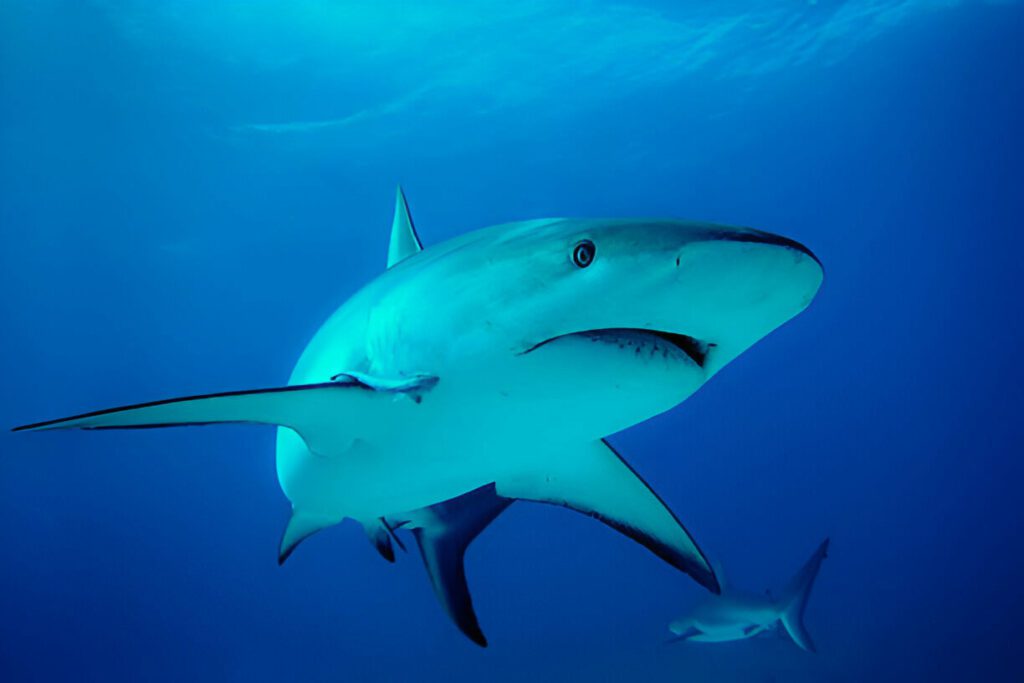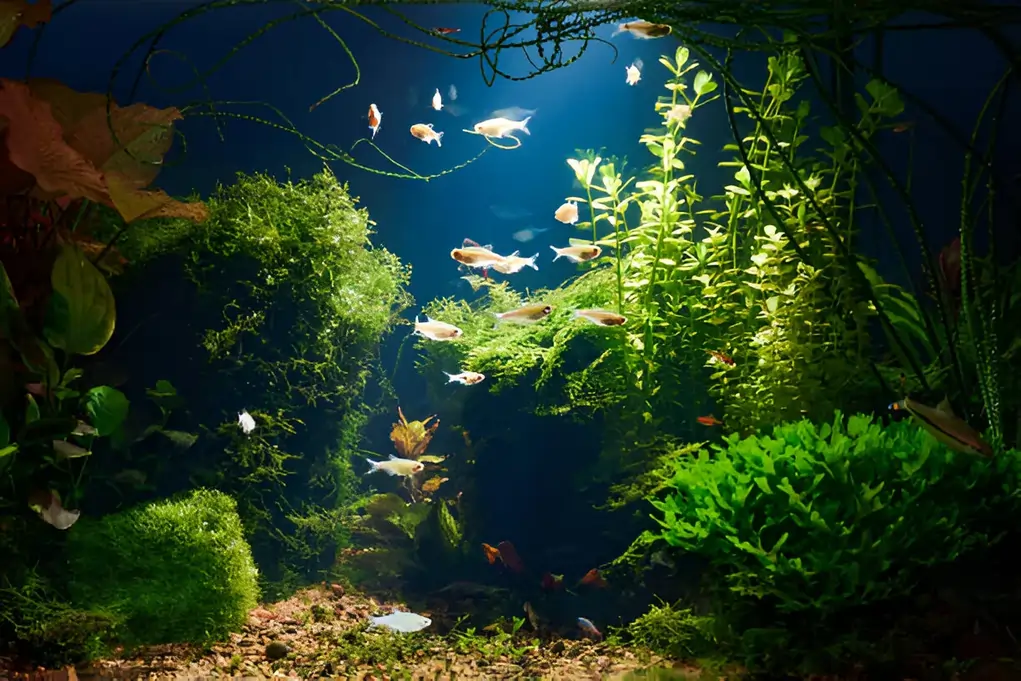The ocean is home to a brilliant sort of creature, and a number of the many sharks that prowl the marine depths, the bronze whaler shark sticks out—not just for its length, but also for its agility and captivating behavior.
Often overshadowed by using the extra famous excellent white, this effective predator deserves a more in-depth look.
In this article we will cover all things about bronze whaler shark.
Additionally, we will provide 12 Fascinating facts about it.
What Exactly Is a Bronze Whaler Shark?
It’s recognized for its putting bronze or gray-brown colour, glossy frame shape, and energetic looking style.
Bronze whalers are regularly seen in shallow coastal waters, even though they also can be located offshore.
They’re fantastically migratory, often transferring in massive businesses and traveling sizable distances in the course of their lifetime.
Despite their strength and pace, bronze whalers aren’t normally aggressive towards human beings, despite the fact that they have been involved in a few documented attacks.
Just How Big Is the Bronze Whaler Shark?
One of the most significant features of the bronze whaler shark is its length.
In common, adult bronze whalers range between 2.1 to 3.3 meters (7 to 11 ft) in length. In rare cases, especially big people can reach up to 3.5 meters (11.5 feet).
As for weight? Some tip the scales at around 2 hundred to three hundred kilograms (440 to 660 kilos).
These sharks are lean, muscular, and surprisingly agile for his or her length. They’re now not simply lengthy—they’re effective, built to chase fast prey and move effectively through the water.
Fun truth: Female bronze whalers are normally larger than the men, which is quite common in shark species.
A Closer Look at Bronze Whaler Shark Teeth
Teeth tell you plenty about a predator, and the bronze whaler doesn’t disappoint.
They have sharp, triangular teeth with nice serrations, perfect for catching slippery prey like fish and squid.
Each tooth is barely curved—designed no longer to crush, however to grip and tear. Think of them like nature’s precision reducing equipment.
Like all sharks, they undergo heaps of teeth in their lifetime. As quickly as one gets dull or misplaced, some other one rotates into an area. It’s a never-ending conveyor belt of bitey goodness.
That said, they’re no longer constructed to chomp down on turtles or seals the way an excellent white does. Their teeth are all about pace and efficiency, no longer brute pressure.
Are they Dangerous?
Let’s deal with the question absolutely everyone’s thinking: Do bronze whaler sharks assault humans?
Short answer: Yes, but very rarely.
There were a handful of reported incidents concerning bronze whalers, typically with spearfishers or surfers who unknowingly get too near feeding zones. But normally, this shark isn’t out there seeking out a chunk of humans.
They may get curious or protective—specifically if there’s blood within the water or fish suffering close by—however unprovoked assaults are extraordinarily unusual.
Here’s the golden rule of shark encounters: Don’t mess with their meals, and don’t act like meals.
12 Fascinating Facts About Bronze Whaler Sharks
Ready to stage your shark trivialities recreation? These 12 bronze whaler data may blow your thoughts:
- They dangle out in gangs – Okay, no longer clearly gangs, but they do shape huge faculties, specifically throughout migration or while prey is plentiful.
- Late bloomers – Females don’t even attain sexual adulthood until around 20 years old!
- Super-long pregnancy – Their gestation duration is set 12 to fourteen months, making them one of the slowest-reproducing sharks.
- They give stay starts – No eggs right here. Bronze whalers are viviparous, just like mammals.
- Worldwide tourists – Found off the coasts of South Africa, Australia, New Zealand, South America, and even elements of Europe.
- Color with a purpose – Their bronze hue enables them to combine with sandy seabeds, making them stealthy hunters.
- Feeding machines – They’ll consume 1–10% in their body weight in step with week, depending on what’s available.
- Squid and sardine fans – They love speedy, oily fish like mackerel and herring—and they’re now not shy about hunting squid either.
- Sensitive hearing – Bronze whalers are interested in low-frequency sounds, in particular the splashing of injured fish.
- Fast and furious – They’re the various fastest sharks in coastal waters, able to quick bursts when chasing prey.
- Frenzy feeders – During activities like the Sardine Run, they pass wild, every so often along dolphins and seabirds.
- Often wrong – Their shape and colour get them harassed with other sharks just like the dusky or Galápagos shark.
Bronze Whaler vs. Great White Shark: Who Wins?
Let’s break it down in the ultimate shark showdown: Bronze Whaler vs. Great White.
| Feature | Bronze Whaler | Great White |
| Size | Up to 3.5 meters | Up to 6 meters |
| Weight | Up to 300 kg | Over 2,000 kg |
| Teeth | Slender, serrated | Massive, bone-crushing |
| Hunting Style | Speed and precision | Stealth and brute force |
| Danger to Humans | Low | High |
So, whilst the bronze whaler would possibly look smooth and mean, it’s no longer pretty the heavyweight brawler that the exceptional white is. Instead, it fills a center-predator niche, keeping fish populations in check and staying out of the limelight.
What Does the Bronze Whaler Shark Eat?
You may assume a shark this big desires to devour constantly—but bronze whalers are certainly efficient feeders.
They’ll chow down on:
- Schooling fish like sardines, mullet, and mackerel
- Cephalopods, particularly squid
- Occasionally smaller sharks or rays
In common, they eat around 4 to 30 kilograms (9 to 66 kilos) of food per week. That’s based totally on the estimate that they consume 1 to ten% of their frame weight, relying on electricity needs and food delivery.
They hunt primarily at sunrise and night, while visibility is low and prey is diverted.
Wait—Is a Whale Shark a Whale or a Shark?
Let’s solve one of the biggest naming doubts within the ocean: Is a whale shark a whale or a shark?
Drumroll… It’s a shark—100% shark.
The whale shark (Rhincodon typus) gets its name from its full-size size and filter-feeding behavior, each of which resemble baleen whales. But make no mistake:
- It breathes via gills, no longer lungs.
- It has cartilage, no longer bones.
- It lays eggs internally and offers stay birth.
- It’s cold-blooded, not like heat-blooded whales.
So next time someone brings it up, you can wow them with the fact that the whale shark is truly the largest fish on Earth, not a marine mammal.
Conservation Status: Why the Bronze Whaler Needs Our Help
Bronze whalers are probably strong swimmers, however they’re now not invincible. Due to overfishing, bycatch, and sluggish replica, they’ve been indexed as Near Threatened via the IUCN.
They’re often accidentally caught in nets meant for tuna or other fish. And because they reproduce slowly, populations take a long time to get better from large-scale losses.
Want to assist? Support:
- Sustainable seafood alternatives
- Shark conservation businesses
- Marine blanketed regions
Every voice counts in relation to shielding the sea’s balance.
Final Thoughts: More Than Just Another Shark
The bronze whaler shark may not have the fame of a tremendous white or the size of a whale shark, however it holds its own in the deep blue sea.
With its shimmering bronze skin, intelligent searching processes, and position as a pinnacle predator, it’s a species that merits our respect and safety.
So next time you’re close to the coast or watching a nature documentary, recall the bronze whaler—the unsung hero of the shark global, gliding just under the waves with electricity and charm.


